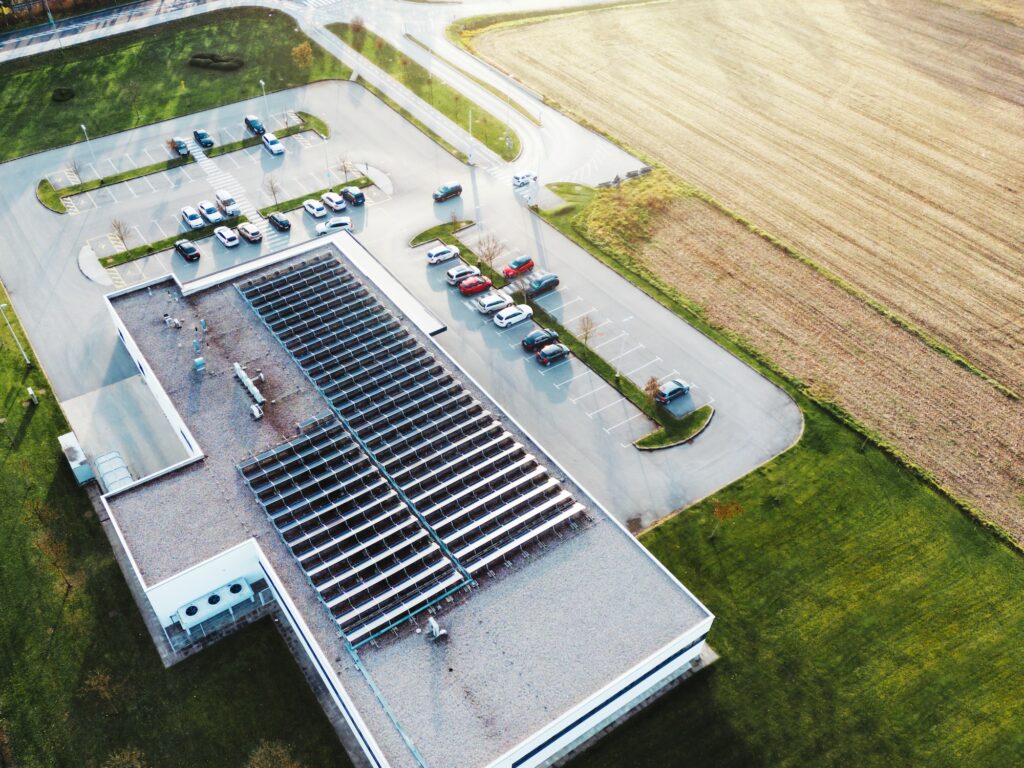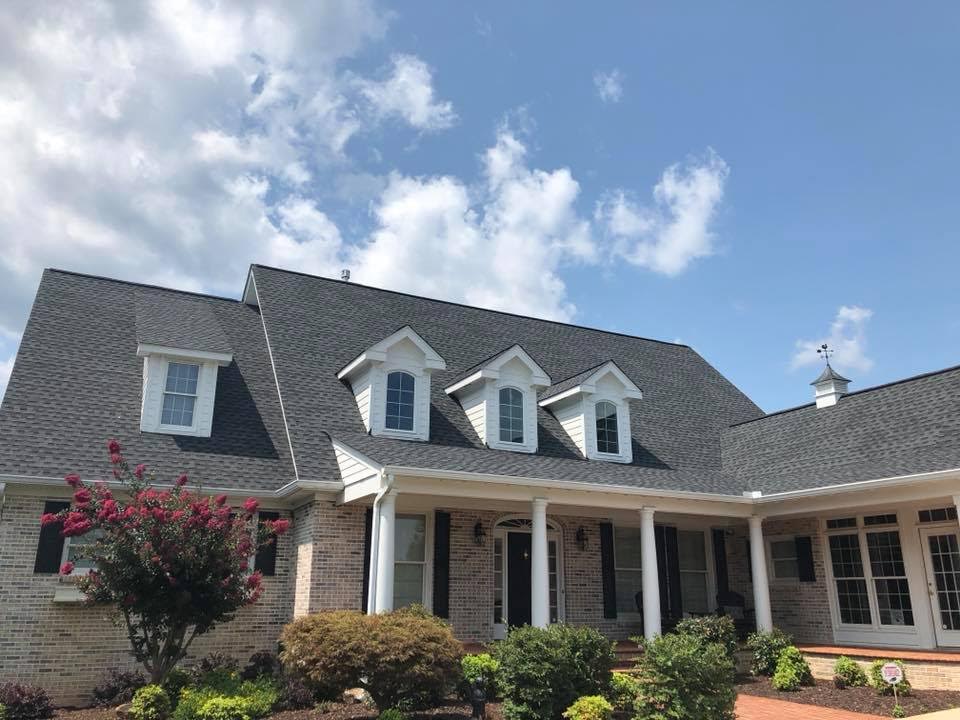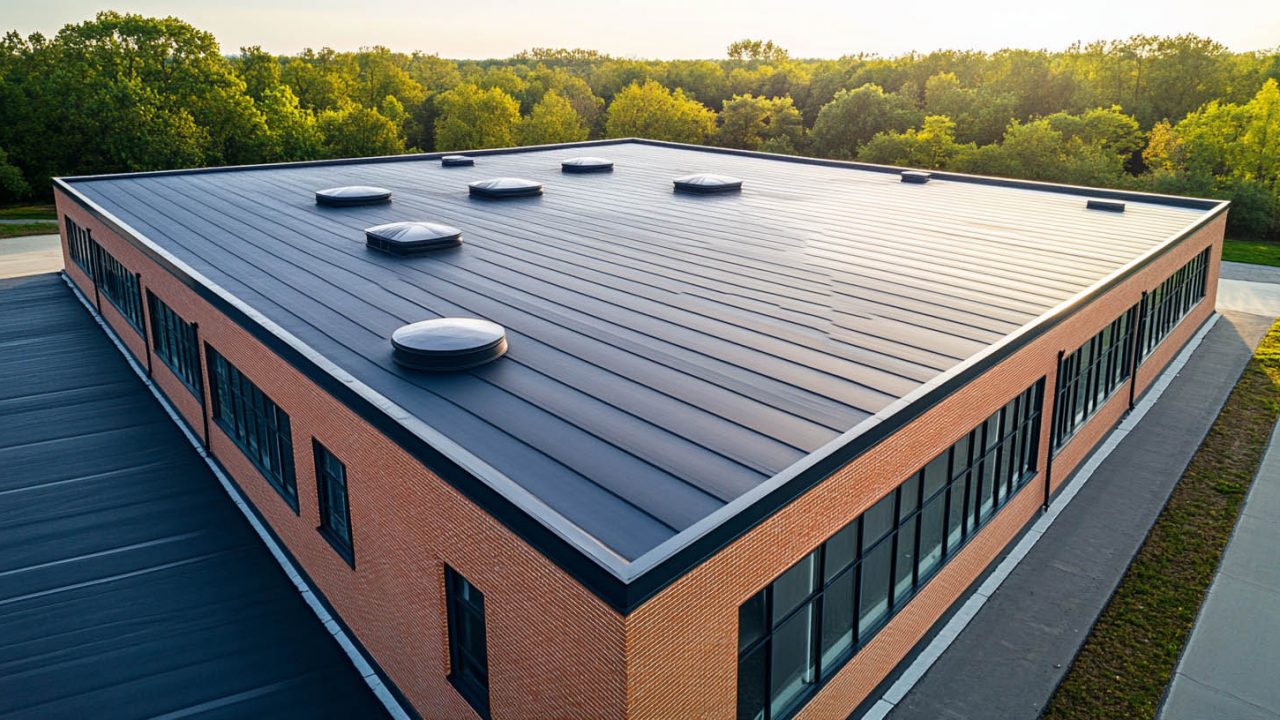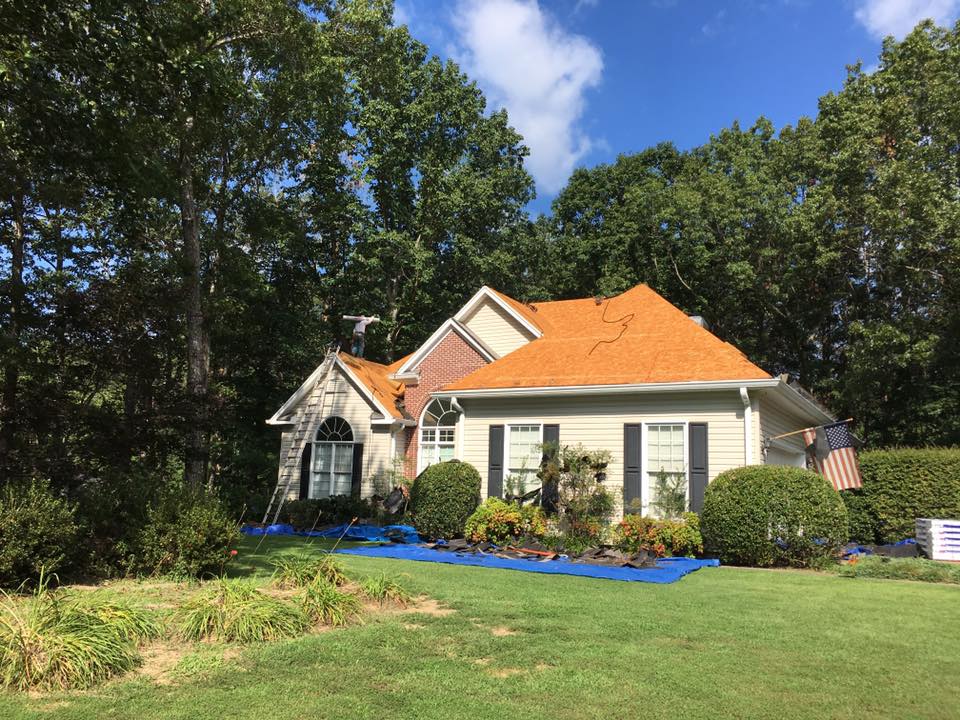Single-ply roofing systems are a popular choice for commercial and industrial buildings. These factory-manufactured sheet membranes are categorized into two types: thermoplastic and thermoset. United Contracting & Roofing LLC specializes in these advanced roofing solutions, ensuring the best fit for your building’s needs.
Types of Single-Ply Roofing Systems
Thermoplastic Polyolefin (TPO)
Thermoplastic Polyolefin, or TPO, is a highly favored single-ply roofing system introduced in the early 1990s. Known for its resistance to UV light and chemicals, TPO also reflects sunlight, making it an energy-efficient option. Its flexibility and resistance to mold, dirt, and impact damage make it a reliable choice for various buildings. TPO membranes come in different thicknesses and roll widths, simplifying the installation process with fewer seams.
Polyvinyl Chloride (PVC)
Polyvinyl Chloride, or PVC, is another robust single-ply roofing system. It is renowned for its durability and resistance to moisture, wind, fire, and chemicals. These characteristics make PVC an excellent option for industries such as food manufacturing, restaurants, and aviation. PVC’s resilience ensures long-lasting protection and minimal maintenance.
Ethylene Propylene Diene Monomer (EPDM)
Ethylene Propylene Diene Monomer (EPDM) is a high-performance synthetic rubber single-ply membrane renowned for its durability and versatility. Engineered to withstand UV light, extreme temperatures, and various environmental conditions, EPDM offers excellent protection for roofing systems. Unlike TPO and PVC, which are heat welded, EPDM is installed using adhesives or mechanical fasteners, providing a flexible and reliable solution that can adapt to building movements over time. This inherent flexibility, combined with its resistance to weathering and aging, makes EPDM a versatile choice suitable for a range of roofing applications, ensuring long-term performance and resilience.
Installation Methods
Single-ply membranes can be installed using three primary methods:
- Fully Adhered: The membrane is bonded directly to the substrate.
- Mechanically Attached: The membrane is secured with fasteners.
- Ballasted: The membrane is held down with ballast, such as gravel or pavers.
Each method of roofing or maintenance offers unique benefits and is selected based on the specific requirements of the building and its environment. Factors such as climate, building structure, and intended use play a critical role in determining the most suitable approach. By considering these factors, you can choose the method that best addresses the needs of your property, ensuring optimal performance, longevity, and cost-effectiveness. Tailoring your choice to the building’s specific characteristics and environmental conditions will help achieve the best results and maintain the integrity of your roofing system.
Benefits of Single-Ply Roofing Systems
Single-ply roofing systems offer several advantages:
- Cost-Effective: Economical solutions with long-term savings.
- Durability: Resistant to environmental factors like UV light, chemicals, and extreme temperatures.
- Flexibility: Accommodates building movements, reducing the risk of damage.
- Energy Efficiency: Reflects sunlight, reducing cooling costs.
Conclusion
Choosing the right single-ply roofing system is crucial for the longevity and performance of your commercial roof. Whether you opt for TPO, PVC, or EPDM, United Contracting & Roofing LLC is here to provide expert advice and professional installation to meet your specific needs. Our commitment to quality, experience, and service ensures that your roofing investment is protected for years to come.If you want to know more about preventive maintenance for your commercial roof, click here.








